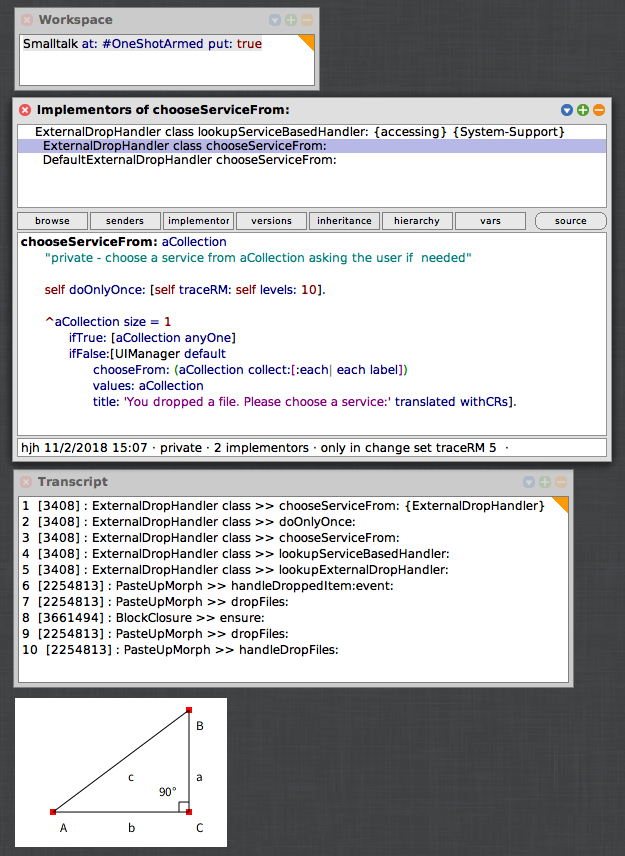SRE Execution Tracer
Last updated at 4:37 pm UTC on 20 August 2020
Execution tracer
The execution tracer is an instance method implemented at the Object level. You have it available after you have loaded the SRE Object Browser.
#traceRM:levels:
To avoid getting to much tracing information it is used in combination with:
self doOnlyOnce: aBlock
Thus to restart the exercise you need to reactivate the 'doOnlyOnce:' again.
This is done with
Smalltalk at: #OneShotArmed put: true
Note that 'RM' stands for 'Role Modeling'.
Example of tracing calls
Let us asssume we are interested how project preferences are saved when leaving a project and entering a new project.
Change the method
Preferences class>>allPreferences
to
allPreferences
self doOnlyOnce: [self traceRM: self levels: 10].
^preferencesDictionary values
Open a Transcript window.
Execute in a workspace
Smalltalk at: #OneShotArmed put: true
In a workspace do
Project current identityHash
This gives you a SmallInteger whose value is related to the identity of the project object, for example 2360597
In a workspace do
(Project named: 'Test') enter
Replace 'Test' with an actual project name you have in your image.
Choose 'go back' (to previous project).
In the Transcript window you observe the following output
1 [3892] : Preferences class >> allPreferences {Preferences}
2 [3892] : Preferences class >> doOnlyOnce:
3 [3892] : Preferences class >> allPreferences
4 [2360597] : MorphicProject >> saveProjectPreferences
5 [2360597] : MorphicProject >> saveState
6 [236812] : MorphicProject >> enter:revert:saveForRevert:
7 [236812] : MorphicProject >> enter
8 [1] : UndefinedObject >> DoIt
9 [3532087] : Compiler >> evaluateCue:ifFail:
10 [3532087] : Compiler >> evaluateCue:ifFail:logged:
You observe that for the old project (the one we asked for the object pointer id) the methods
- #saveState
- #saveProjectPreferences
are called and that all preferences are considered.
Another example
ExternalDropHandler class>chooseServiceFrom: aCollection
chooseServiceFrom: aCollection
"private - choose a service from aCollection asking the user if needed"
self doOnlyOnce: [self traceRM: self levels: 10].
.....
Again do
Smalltalk at: #OneShotArmed put: true
Then drop a picture file onto the desktop.

http://folk.uio.no/trygver/themes/SRE/BabySRE.pdf
See also
MessageSendRecorder (and MethodWrappers)


